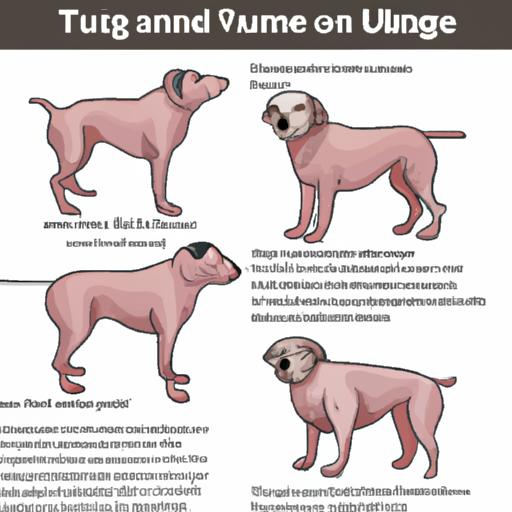As a loving and responsible pet owner, your dog’s health is undoubtedly a top priority. That’s why it’s crucial to understand the signs of potential health issues like tumors. In this article, we will delve into what dog tumors look like, how they develop, and what steps you should take if you suspect your pet may have one.
Table of Contents
- Understanding Tumors in Dogs
- Types of Tumors
- Signs and Symptoms
- Diagnosing Tumors
- Treatment Options
- Frequently Asked Questions
Key Takeaways
- Tumors in dogs can range from benign to malignant.
- They can present in various ways, including lumps, bumps, or swelling.
- Early detection can significantly improve prognosis.
- Regular veterinary checkups and being aware of any changes in your dog’s body or behavior are essential.
Understanding Tumors in Dogs
A tumor is an abnormal growth of cells. They can occur anywhere in your dog’s body and can be benign (non-cancerous) or malignant (cancerous). Tumors in dogs can vary significantly in appearance, which can make them challenging to identify without professional help. However, being aware of any changes in your pet’s body or behavior can be crucial in early detection.
You can find more detailed information about dog tumors on the American Veterinary Medical Association’s website.
Types of Tumors
Tumors in dogs come in various forms and can affect different parts of their body. Here are a few common types:
-
Lipomas: These are benign fatty tumors often found in middle-aged or older dogs. They typically feel soft and are located just beneath the skin.
-
Mast Cell Tumors: Mast cell tumors are a form of skin cancer. They can be small, large, soft, hard, or come with or without hair.
-
Histiocytomas: These are benign skin tumors common in young dogs. They often appear as small, firm, dome-shaped lumps.
-
Melanomas: These are usually malignant and commonly found in a dog’s mouth or on their legs. They are often dark in color but can vary.
You can learn more about the different types of tumors at the Pet Cancer Center’s website.
Signs and Symptoms
While tumors can often present as visible lumps or bumps, some may be internal and harder to identify. Some signs that your dog might have a tumor include:
- Unexplained swelling
- Persistent sores
- Difficulty eating or swallowing
- Unexplained weight loss
- Lethargy or depression
For a more in-depth understanding of your dog’s health and habits, consider visiting One Top Dog‘s articles on canine behavior and health.
Diagnosing Tumors
If you notice any changes in your dog’s physical appearance or behavior, it is crucial to seek veterinary attention immediately. Your vet will likely perform a physical examination and may take a biopsy of the lump for further analysis. They might also use imaging techniques like X-rays, ultrasounds, or MRIs to assess the tumor.
For more information on diagnosing health issues in dogs, check out this article on One Top Dog.
Treatment Options
Treatment for tumors in dogs depends on the type and stage of the tumor. Options may include surgery, radiation therapy, chemotherapy, and immunotherapy. Your vet will discuss these options with you and help you decide on the best course of action for your pet.
For more on treatment options, see this article on One Top Dog.
Frequently Asked Questions
Q: Can all tumors in dogs be seen or felt?
No, some tumors, especially those inside the body, may not be visible or palpable. Regular vet checkups can help detect these.
Q: Are all tumors in dogs cancerous?
No, tumors can be benign (non-cancerous) or malignant (cancerous). A vet can determine this through a biopsy.
Q: Can tumors in dogs be prevented?
While there’s no surefire way to prevent tumors, maintaining a healthy lifestyle can reduce the risk. This includes a balanced diet, regular exercise, and regular vet checkups.
In conclusion, being aware of the signs of tumors in dogs and seeking timely veterinary care can significantly improve your pet’s prognosis. Always remember, your furry friend relies on you for their health and well-being.



